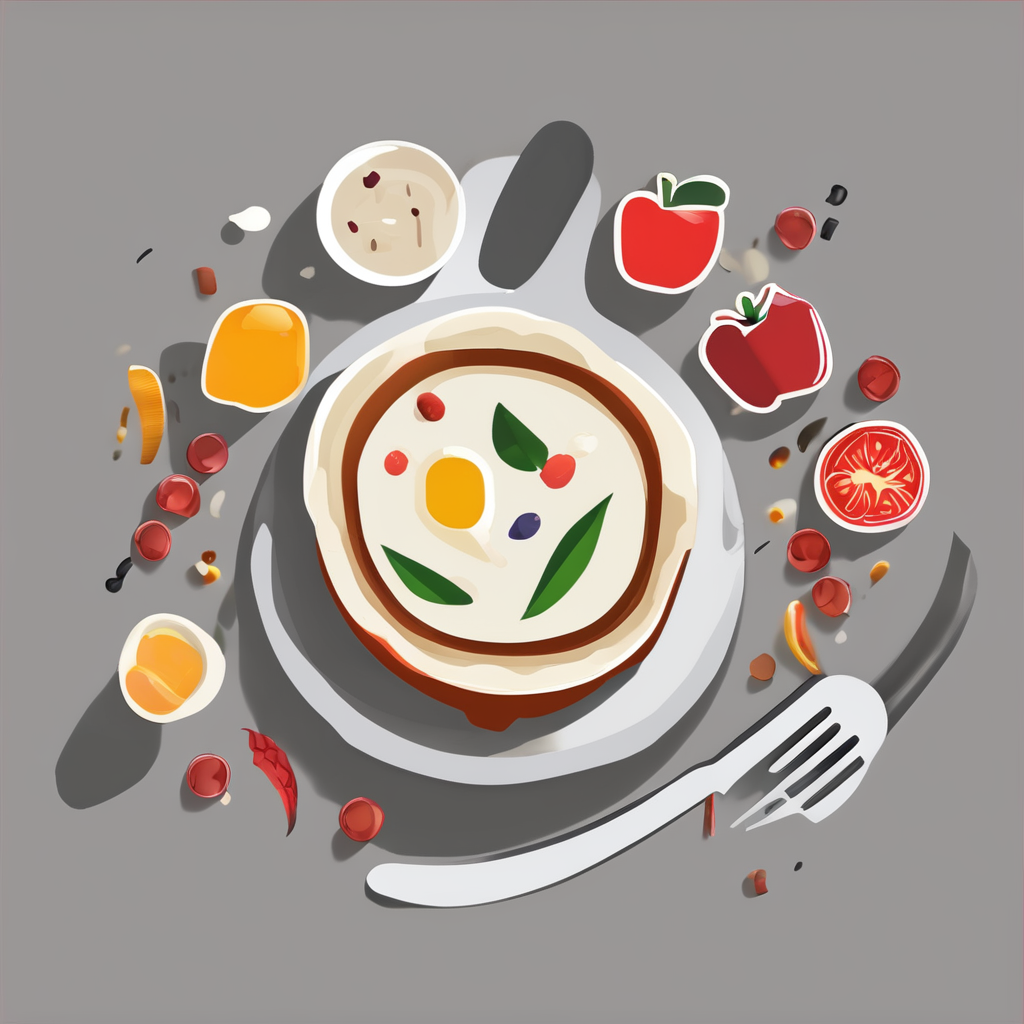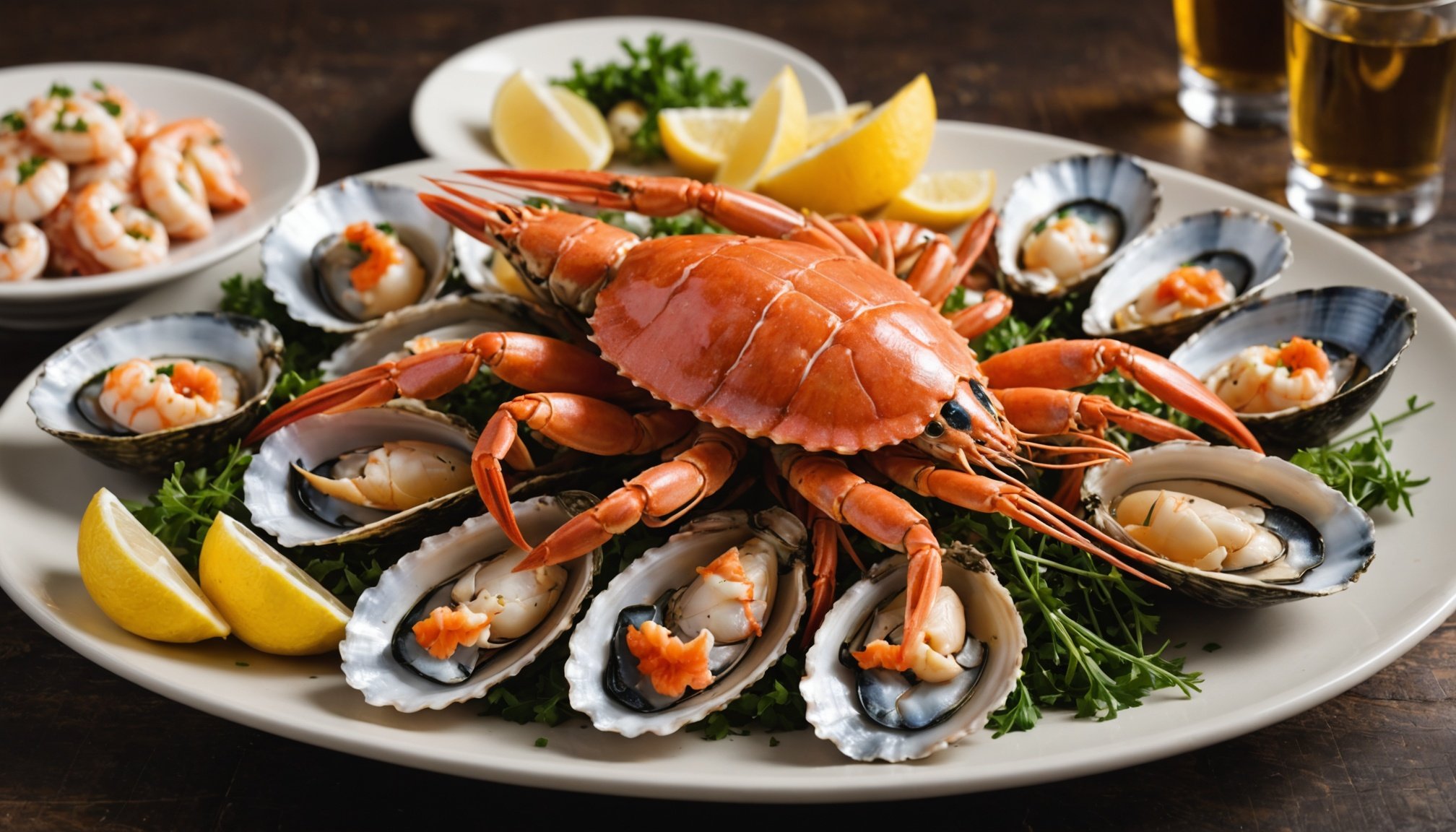Serving raw shellfish can be a delicacy, but it comes with significant risks. Proper preparation and handling are vital to ensure the safety of your customers. This guide outlines essential practices for seafood restaurants, detailing everything from sourcing quality shellfish to maintaining hygiene standards. By adhering to these guidelines, establishments can not only protect their patrons but also enhance their reputation and trust in the competitive seafood market. Prepare to elevate your seafood service with sound practices that prioritize safety and delight diners.
Overview of Raw Shellfish Safety
Understanding the essentials of raw shellfish safety is crucial for both consumers and restaurateurs.
This might interest you : Exploring Solar Energy: Advantages and Obstacles for Remote Dining Establishments
Importance of Food Safety in Seafood Restaurants
Ensuring food safety in seafood restaurants is paramount. Raw shellfish, such as oysters and clams, are popular delicacies. However, they pose potential health risks if not handled properly. Restaurants must adhere to stringent food safety standards to prevent foodborne illnesses. This involves sourcing shellfish from reputable suppliers and maintaining proper storage temperatures. Compliance with health regulations is not just a legal requirement but a commitment to customer safety.
Overview of Health Regulations and Compliance
Health regulations are designed to minimize risks associated with raw shellfish. These include guidelines for storage, preparation, and serving. Restaurants are required to comply with these standards to ensure the safety of their patrons. Regular inspections and staff training are essential components of compliance. As one food safety expert noted, "Adhering to regulations is not an option; it's a necessity."
This might interest you : Key Ingredients for Launching a Thriving Pop-Up Restaurant Experience
Defining Raw Shellfish and Its Popularity in Cuisine
Raw shellfish refers to seafood consumed without cooking. Its popularity stems from its unique texture and flavor. Despite its appeal, consumers should be aware of the potential risks. By understanding and respecting food safety standards, diners can enjoy raw shellfish with confidence. Here are a few popular raw shellfish dishes:
- Oysters on the Half Shell
- Sushi with Raw Clams
- Ceviche with Raw Scallops
Sourcing Quality Shellfish
Identifying the best sources of shellfish is essential for maintaining high standards in seafood cuisine.
Reputable Suppliers and Sources
Choosing reputable suppliers for sourcing shellfish is critical. These suppliers ensure that the shellfish is harvested sustainably and meets safety standards. Look for certifications such as the Marine Stewardship Council (MSC) or the Aquaculture Stewardship Council (ASC). These labels indicate adherence to environmental and safety guidelines.
Freshness and Quality Indicators
The freshness and quality of shellfish are paramount. Fresh shellfish should have a mild sea smell and tightly closed shells. If the shell is open, it should close when tapped. These indicators help in assessing the quality of the seafood, ensuring it is safe for consumption.
Seasonal Variations
Understanding seasonal variations is vital for sourcing quality shellfish. Different species are at their peak at various times of the year, impacting availability and price. For example, oysters are often best in the colder months. Being aware of these patterns allows for strategic purchasing, ensuring the best quality at the best price.
- Reputable Suppliers: Ensure sustainable and safe practices
- Freshness Indicators: Mild sea smell, closed shells
- Seasonal Variations: Peak times for different species
Safe Handling Practices
Implementing effective shellfish handling techniques is crucial for ensuring food safety.
Temperature Control and Storage Guidelines
Maintaining proper temperature control is essential in shellfish handling. Raw shellfish should be stored at temperatures below 40°F (4°C) to prevent bacterial growth. Use refrigerated storage units with accurate thermometers to monitor conditions consistently. Temperature control helps preserve the freshness and safety of the shellfish, reducing the risk of foodborne illnesses.
Cross-Contamination Prevention Techniques
Preventing cross-contamination is a key aspect of food safety practices. It is crucial to separate raw shellfish from other foods, especially ready-to-eat items. Use dedicated utensils and cutting boards for shellfish to minimize contamination risks. Regular cleaning and sanitizing of work surfaces further ensure a safe food preparation environment.
Proper Thawing and Preparation Methods
Proper thawing is vital for maintaining shellfish quality. Thaw shellfish in the refrigerator or under cold running water, never at room temperature. This method ensures even thawing and prevents bacterial growth. When preparing shellfish, follow meticulous cleaning and inspection routines to remove any debris or damaged shells.
- Temperature Control: Below 40°F (4°C)
- Cross-Contamination: Separate utensils and surfaces
- Thawing Methods: Refrigerator or cold water only
Hygiene and Sanitation Protocols
Essential practices for maintaining a safe and clean environment in seafood restaurants.
Staff Personal Hygiene Standards
Maintaining high hygiene standards is crucial in preventing contamination in seafood restaurants. Staff must adhere to personal hygiene protocols, including regular hand washing and wearing clean uniforms. These practices help reduce the risk of transmitting pathogens to shellfish and other foods. Regular monitoring ensures compliance with these standards, fostering a culture of safety.
Cleaning and Sanitizing Surfaces and Equipment
Proper cleaning and sanitizing of surfaces and equipment are vital components of sanitation protocols. All food preparation areas should be cleaned with approved sanitizing agents to eliminate bacteria. Equipment used in handling shellfish must be sanitized before and after use. This practice prevents cross-contamination and ensures the safety of the food served.
Importance of Regular Training and Monitoring
Regular training sessions are essential for reinforcing hygiene practices among staff. Training programs should cover the latest sanitation techniques and safety protocols. Monitoring staff adherence to these practices is equally important. As a renowned food safety expert once said, "Continuous education and vigilance are the pillars of effective food safety management."
- Hygiene Standards: Hand washing, clean uniforms
- Sanitizing Protocols: Approved agents, equipment care
- Training and Monitoring: Regular sessions, adherence checks
Regulatory Requirements and Compliance
Compliance with food safety regulations is a cornerstone of responsible shellfish handling.
Overview of Local and Federal Regulations
Food safety regulations for shellfish are enforced at both local and federal levels. These regulations ensure that shellfish are safe for consumption by setting standards for harvesting, processing, and distribution. The U.S. Food and Drug Administration (FDA) and local health departments play key roles in establishing these guidelines. Compliance with these regulations is mandatory for any business handling shellfish.
Required Documentation and Inspections
Businesses must maintain comprehensive records to demonstrate compliance with shellfish regulations. This includes documentation of sourcing, storage conditions, and temperature logs. Regular inspections by health authorities verify adherence to these standards. Failing an inspection can result in penalties, including fines or temporary closure of the establishment.
- Documentation: Sourcing records, temperature logs
- Inspections: Regular checks by health authorities
Consequences of Non-Compliance
Non-compliance with food safety regulations can have severe consequences. Besides legal repercussions, it can damage a business's reputation and lead to customer mistrust. As a food safety expert once remarked, "Neglecting compliance is not just a legal risk; it's a risk to your business's survival." Ensuring compliance is not only a regulatory obligation but a commitment to public health and safety.
Potential Health Risks Associated with Raw Shellfish
Exploring the health risks linked to raw shellfish consumption is essential for informed dining.
Common Pathogens and Contaminants
Raw shellfish can harbor various pathogens and contaminants. Vibrio bacteria and norovirus are common culprits. These microorganisms thrive in warm waters where shellfish are harvested. Contaminants like heavy metals can also accumulate in shellfish, posing additional health risks. Awareness of these potential dangers is crucial for safe shellfish consumption.
Symptoms and Repercussions of Foodborne Illnesses
Consuming contaminated shellfish can lead to foodborne illnesses. Symptoms often include nausea, vomiting, diarrhea, and abdominal pain. In severe cases, infections can cause liver damage or even be life-threatening. Recognizing these symptoms early can lead to prompt medical attention and reduce health complications.
Importance of Consumer Awareness and Education
Consumer education is vital in mitigating the health risks associated with shellfish consumption. Understanding the sources and potential dangers of raw shellfish empowers consumers to make safer choices. Restaurants can aid this by providing information on shellfish safety and preparation methods. As one food safety expert advises, "Informed consumers are the first line of defense against foodborne illnesses."
- Pathogens: Vibrio, norovirus
- Symptoms: Nausea, diarrhea
- Consumer Education: Safety awareness, informed choices
Best Practices for Staff Training
Effective staff training is crucial for maintaining high standards in food safety.
Essential Training Topics for Food Handlers
Staff training should encompass a comprehensive range of food safety education topics. Key subjects include proper hygiene practices, understanding cross-contamination, and maintaining temperature control. Training should also cover identification of shellfish freshness and safe handling techniques. By focusing on these areas, staff can ensure that food safety standards are consistently met.
Techniques for Effective Knowledge Retention
To enhance knowledge retention, employ interactive training methods such as role-playing and hands-on demonstrations. Visual aids and real-life scenarios can make learning more engaging and memorable. Regular quizzes and feedback sessions help reinforce food safety education. As a food safety expert suggests, "Interactive learning fosters better understanding and application."
Assessing and Updating Training Programs
Regular assessment of staff training programs is vital to ensure their effectiveness. Use evaluations and feedback to identify gaps in knowledge and areas for improvement. Update training materials to reflect the latest food safety education standards and regulations. Continuous improvement in training ensures that staff remain competent and confident in their roles.
- Training Topics: Hygiene, cross-contamination, temperature control
- Knowledge Retention: Interactive methods, visual aids
- Program Assessment: Regular evaluations, updates
Maintaining Customer Safety and Satisfaction
Ensuring a safe and satisfying dining experience is essential for customer trust.
Communicating Safety Practices to Customers
Effectively communicating safety practices is vital for maintaining customer safety. Restaurants should provide clear information about their food safety protocols. This can be achieved through menu notes, signage, or direct communication from staff. Transparency in safety measures reassures customers, enhancing their dining experience. As a food safety expert emphasizes, "Clear communication builds trust and confidence."
Implementing Feedback Systems for Continuous Improvement
Feedback systems are crucial for continuous improvement in customer safety. Encourage diners to share their experiences and concerns through surveys or suggestion boxes. This feedback provides valuable insights into the dining experience and identifies areas for enhancement. Regularly reviewing feedback helps restaurants adapt and improve their safety protocols, fostering a culture of safety.
Creating a Culture of Safety Within the Restaurant Environment
A strong culture of safety is foundational to ensuring customer safety and satisfaction. This involves staff training, regular safety audits, and a commitment to food safety. Encourage staff to prioritize safety in all operations, from food preparation to service. By embedding safety into the restaurant's ethos, the dining experience becomes more reliable and enjoyable for customers.
- Safety Practices: Menu notes, staff communication
- Feedback Systems: Surveys, suggestion boxes
- Culture of Safety: Staff training, safety audits











